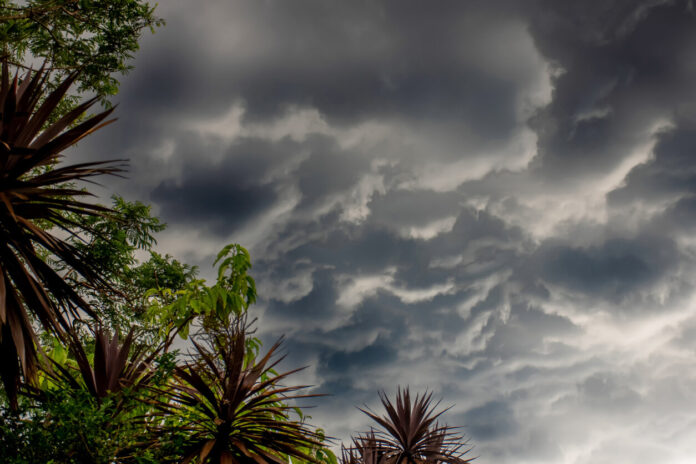El Niño is back. On July 4, 2023, the United Nations (UN) announced the start of a new episode of this meteorological phenomenon. This statement confirms the first alert from the World Meteorological Organization (WMO). “For the first time in seven years, the El Niño phenomenon has taken hold of the tropical Pacific, paving the way for a likely rise in global temperatures and disruptions in weather and climate,” reads a statement. institution’s press release.
But what is the El Niño phenomenon really? Why do meteorologists fear its return? More so, how much can it influence the rise in global temperatures? Patrick Marlière, meteorologist and director of Agate Météo, and Guillaume Jauseau, meteorologist in charge of the scientific department of Météo
“El Niño is the child Jesus”, explains Patrick Marlière. Indeed, originating in Latin America, this phenomenon generally appears at the time of the end of year celebrations. It occurs on the west coast of South America. But if the world organizations have informed of its presence, this meteorological situation remains completely normal.
“El Ni ñ o is a completely natural phenomenon which occurs periodically approximately every three to seven years”, specifies Guillaume Jauseau. But how is it formed? “It is characterized by a kind of pocket of warm water at the level of the surface waters of the equatorial belt which is in the Pacific”, he continues. The warm waters will then upset the trade winds, winds that cross the Pacific. However, the latter are responsible for transporting heat from the tropical region to colder regions. During an El Ni ño episode, “the heat accumulated in the eastern Pacific Ocean will disturb these trade winds. They will then weaken or their winds will reverse”, concludes Guillaume Jauseau.
The phenomenon then causes an imbalance in the circulation of precipitation. Periods of drought or flooding could occur. But some seem to fear a bigger episode this year. For what reasons ?
“We know that he is quite important this year, because he has taken on Indonesia quite quickly. When he arrives, he will influence the weather for the next three to four years by bringing and being responsible even more marked global warming”, announces Patrick Marlière. Indeed, the phenomenon leads to a modification of atmospheric circulation patterns. This is explained by the importance of the oceans in the functioning of the climate.
“This can unfortunately lead to an increase in the average temperature on a global scale”, specifies Guillaume Jauseau. “This is what hangs a little in our face this year in addition to climate change which is already inducing a warming of the waters at this very moment”, he adds. Its intensity could therefore be greater and cause widespread damage. Forecasts by meteorologists even indicate above-average warming.
“There are several factors that will allow us to recognize the phenomenon”, informs us Guillaume Jauseau when we discuss with him the intensity at which this phenomenon could appear. A weakening of the trade winds is then a good indicator. “Already in June, we are starting to observe a temperature anomaly in the equatorial belt of the Pacific but we cannot determine exactly when it will occur or to what extent”, he specifies then.
Nevertheless, several models are beginning to foresee a Super El Niño. “This is what happened in 2015 and 2016. This had also resulted in record heat at the planetary level”, informs Guillaume Jauseau. Indeed, “the surface water temperature anomaly had risen to 2.5°C at that time”, he continues. Nevertheless, according to him, the other forecasts for the 2023 episode indicate that they should remain between 1 and 1.5°C. “But once again, there are several models that see a temperature anomaly well above 2°C,” concludes the expert. But what other consequences could this phenomenon cause? Is it likely to appear more frequently?
“There is a risk that 2024 will be the hottest year, but it will depend on the intensity of this phenomenon. Nevertheless with climate change, it is feared that the years 2023 to 2024 will be the hottest on record”, announces Guillaume Jauseau. If this is true, other consequences will appear.
If France will not be directly impacted, other countries will pay the price. “There are several studies that have made the link between cholera epidemics and El Niño because these are underdeveloped countries. They therefore do not necessarily have the capacity to respond to such extreme events as floods, periods of drought”, informs the meteorologist. More so, agriculture and the food sector are likely to be affected. But is El Niño likely to happen more frequently?
“There are several studies that point to more frequent intense El Niño events, but it is still very difficult to understand exactly how it occurs, how it works,” he says. Meteorologists fear that with the warming of the waters which will be even more intense, the phenomenon will also induce more difficult consequences. What precautions should be taken ?
“For climate change and the role of El Niño, the most important thing is to take action in the most vulnerable countries,” says Guillaume Jauseau. Before continuing: “the decisions remain political but we expect, in the world of meteorologists, firm and rapid decisions to limit greenhouse gas emissions”.
According to experts, individual measures taken by States are not enough. “Every gesture is important but it is not up to the challenge that awaits us”, he informs us when we ask him about the drought plan launched by the French government. “It would take global action at the same time for a rapid and effective reduction of gas emissions so this is good news but it is not enough”, he concludes.





